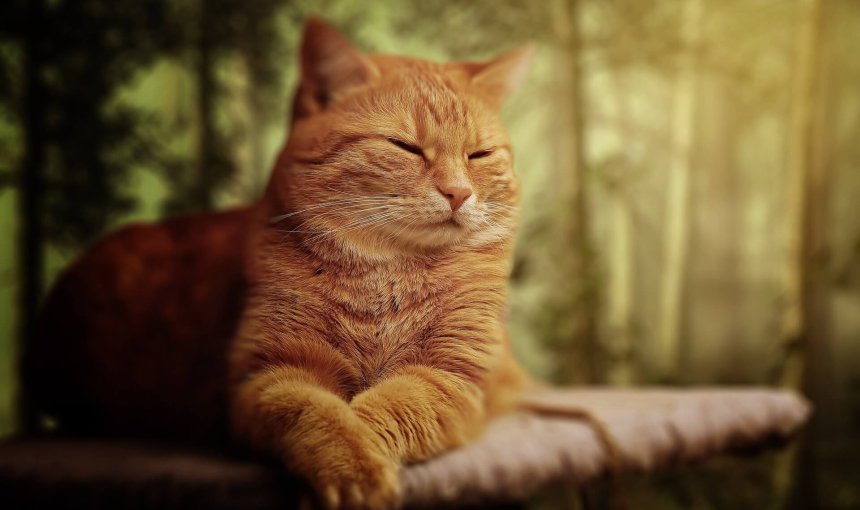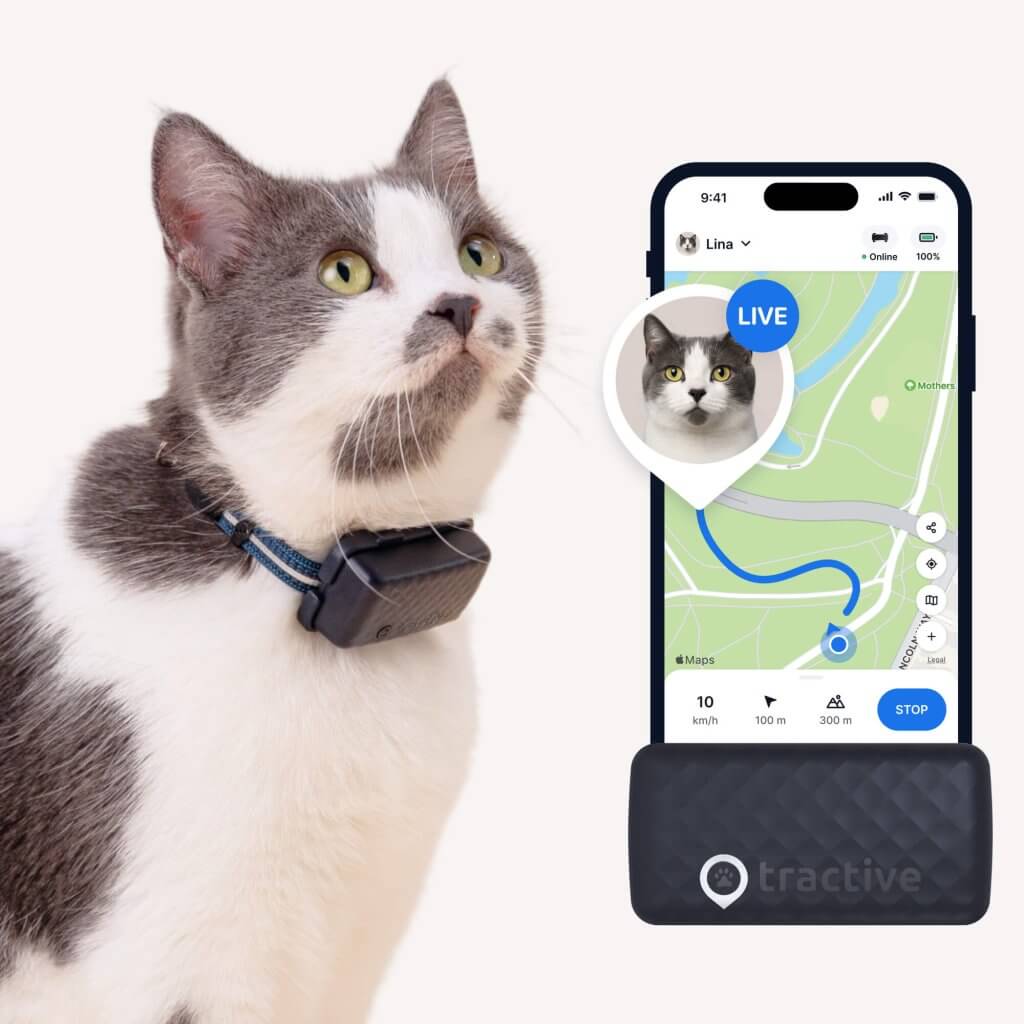Cat Slow Blinks: What They Mean
Your cat's slow blinks say a lot about their relationship with you - but what do they even mean? Turns out, it's actually a good sign. (And it means you're doing a great job as a cat parent.)

Cats work in mysterious ways – and even more so when it comes to showing us they care. Yours might purr, cuddle up to you constantly, or…blink at you slowly? What do cat slow blinks mean? And is it even a big deal?

Find out where your cat spends their time.
Read moreWhat does a cat slow blink look like?
It can be easy to miss a cat’s slow blink. In fact, you wouldn’t be the first to think your cat is wide-eyed and on high alert most of the time. Or you might confuse it with any other blink. Some cats might even slow blink in different ways – like rolling their eyes or squishing their eyes tight. Or in other comical ways, like you might’ve seen online.
Why does my cat slow blink at me?
In a nutshell: your cat’s slow blink is a sign that they trust you and feel comfortable around you.1 It’s as close to an “I love you” from them as you’ll ever get. So if you’ve received one of these languid, droopy-eyed blinks from your cat, pat yourself on the back. You’re doing a great job as a cat parent and your cat is acknowledging your hard work.
So watch out for the next time your feline friend deliberately makes eye contact – and makes a slow, deliberate blink. It’s how your cat expresses that they’re comfortable letting their guard down around you. And for your little hunter, this is actually a pretty big deal.2
How to get your cat to slow blink at you
Your cat is more likely to slow blink at you if they’re already in a calm, familiar environment. (Like snuggled in your arms before a fireplace.) So the next time you’re enjoying some quality time together, lead by example. Try to slow blink at them. Make sure to avoid direct eye contact for too long – and be persistent. It might take your cat some time to catch on to your behavior. And because they tend to see us as bigger, clumsier cats who are in charge of their food, they also tend to adapt to and mimic our actions.
In fact, your cat is also likely to slow blink back at other people who slow blink at them.3 Great news for when you’re introducing a new roommate or partner to your cat. (And want them to score a few brownie points, trust-wise.)
In fact, your cat’s slow blinks are similar to why they meow. It’s a form of communication they’ve evolved specifically to better relate to and interact with us humans.
Why does my cat look away when I slow blink?
Ouch, this feels personal, doesn’t it? But it’s more likely that your cat might be feeling overwhelmed by the sudden attention. Cats are creatures of habit and routine – so a sudden change can be stressful. Or you might be more likely to experience this if you’ve just adopted a cat or they’re still not 100% comfortable around you yet. In fact, cats who are more nervous around people tend to take longer to slow blink back at them.4
Also keep in mind that not all cats show their affection with a slow blink. Cats are famously undemonstrative, affection-wise – but they do have their ways of showing they care. So instead of a slow blink, they might gift you socks, purr on your lap, snuggle against you at night, or cry endlessly when you’re behind a locked bathroom door. Much like humans, cats have different types of love languages – and with a little patience and consistency, you can figure out the subtle cues that yours trusts you.

Track your cat wherever they go
See where they are in real-time, no matter how far they roam. Discover their territory. Get alerted if they go too far. Track activity, sleep, and receive health alerts if your cat’s activity changes. Keep your feline friend healthy and safe.
Do cats slow blink at other cats?
Yes – unlike meowing, cats do slow blink at each other! You’re more likely to see this among two cats who aren’t threatened by each other’s presence. (Like cats who’ve grown up together.)5 Male cats meeting for the first time might not always be so friendly. They might need a bit more time to warm up to each other, usually due to territorial instincts.
So if you’re introducing your cat to a friend’s – and they look at each other, blink, and then look away, it’s a sign they just about became besties themselves. On the other hand, prolonged, direct eye contact means one of your cats most likely wants to pick a fight instead.
Small steps to gaining your cat’s trust
Give your cat plenty of space
Even the most sociable of cats need a bit of cool-off time. So if you can invest in vertical spaces and perches, they’ll thank you for it. (In their own quiet way.) Cats generally like to have a high vantage point where they can survey their surroundings. It helps them relax and feel more at ease with their environment.
Besides this, we also mean give your cat space – figuratively. It’s generally not a good idea to pick them up or pet them or force them to interact with you or others if they’re not in the mood. It might make your cat hiss, bat, scratch, or even bite you in self defense.
We’d also recommend keeping an eye out for their body language. If your cat seems tense, nervous, or hunched up, it’s better to give them some space. Your cat will come back for company when they’re ready.
Make regular playtime a part of your everyday routine
Playtime is one of the best ways to get a cat to associate you with a positive experience. And no, you don’t necessarily need expensive cat toys or equipment to get started. Rather, even simple games like chasing a laser or a toy on a string can be enough to keep your cat entertained. Or take them outdoors – to your backyard or a local park nearby – and let them enjoy the sunlight, grass, and the sights, sounds, and smells of nature. Plus, they’ll benefit tremendously from the exercise.
Regular playtime is also a great way to help a cat overcome separation anxiety. You might not notice it, but even cats (much like dogs) don’t like being left alone for long periods of time. So once you’re home from work, spend some time cuddling and playing with them. It’ll help your cat slowly build trust and learn to bond with you over time. (And maybe throw in a slow blink or two.)
Figure out your cat’s “touch” language
Not all cats are built the same. One might purr when you stroke their ears – while another might resist instead. Yours might prefer it when you rub their chin or cheeks or even areas like where their tail connects to their body. Keep your fingers gentle and “wiggle” them – instead of long strokes. Also, avoid touching your cat’s belly or stroking them in the opposite direction of their fur.
By taking the time to figure out how your cat likes to be cuddled and approached, you’ll be helping them learn to trust that you won’t hurt them. Which, over time, makes it easier for them to associate you with positive feelings.
Stick to a consistent routine
Like we’ve covered, cats tend to get thrown off balance from changes to routine. Sometimes, you can’t really help it – like if you move apartments or have just adopted them. So in times like these, it can take your cat a little while to adjust and approach you with trust again.
So start small and create a predictable routine of feeding, playtime, naptime – and also your regular interactions with your cat. If you’re, say, in the habit of playing with your cat in the evenings, do your best to stick to these timings. Switching playtime to mornings instead might confuse and stress out your cat instead.
Way more than just an adorable quirk, your cat’s slow blinks are a profound and beautiful language of their own. They’re a sign of your cat’s trust and affection in you – even if it’s not so obvious. So by taking some small steps, like with regular playtime or actively monitoring their health, you can earn their trust for a lifetime.



